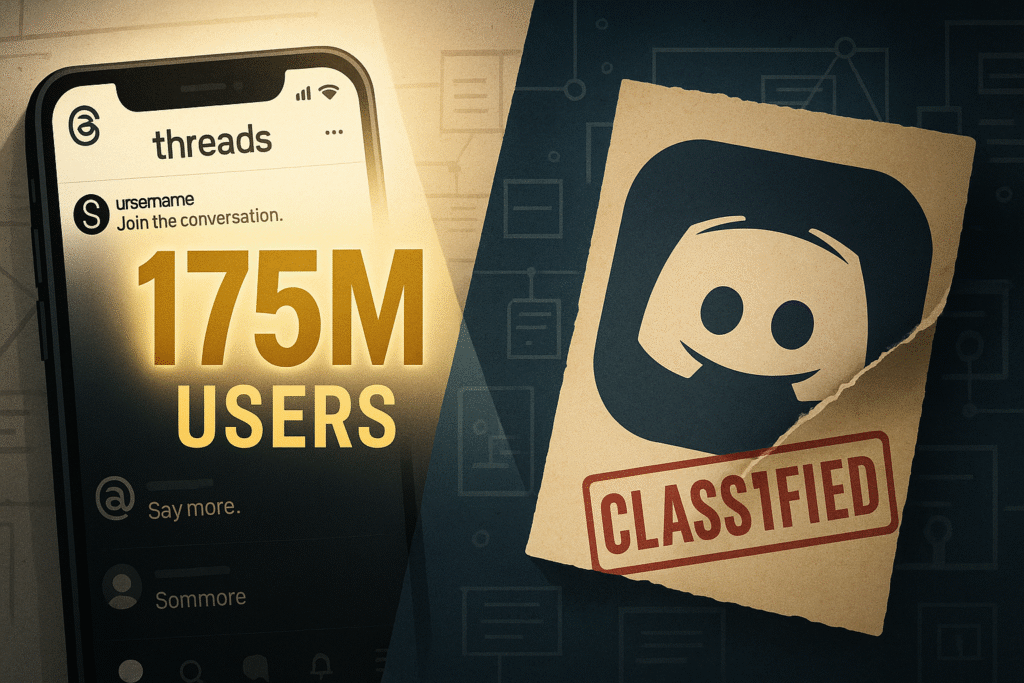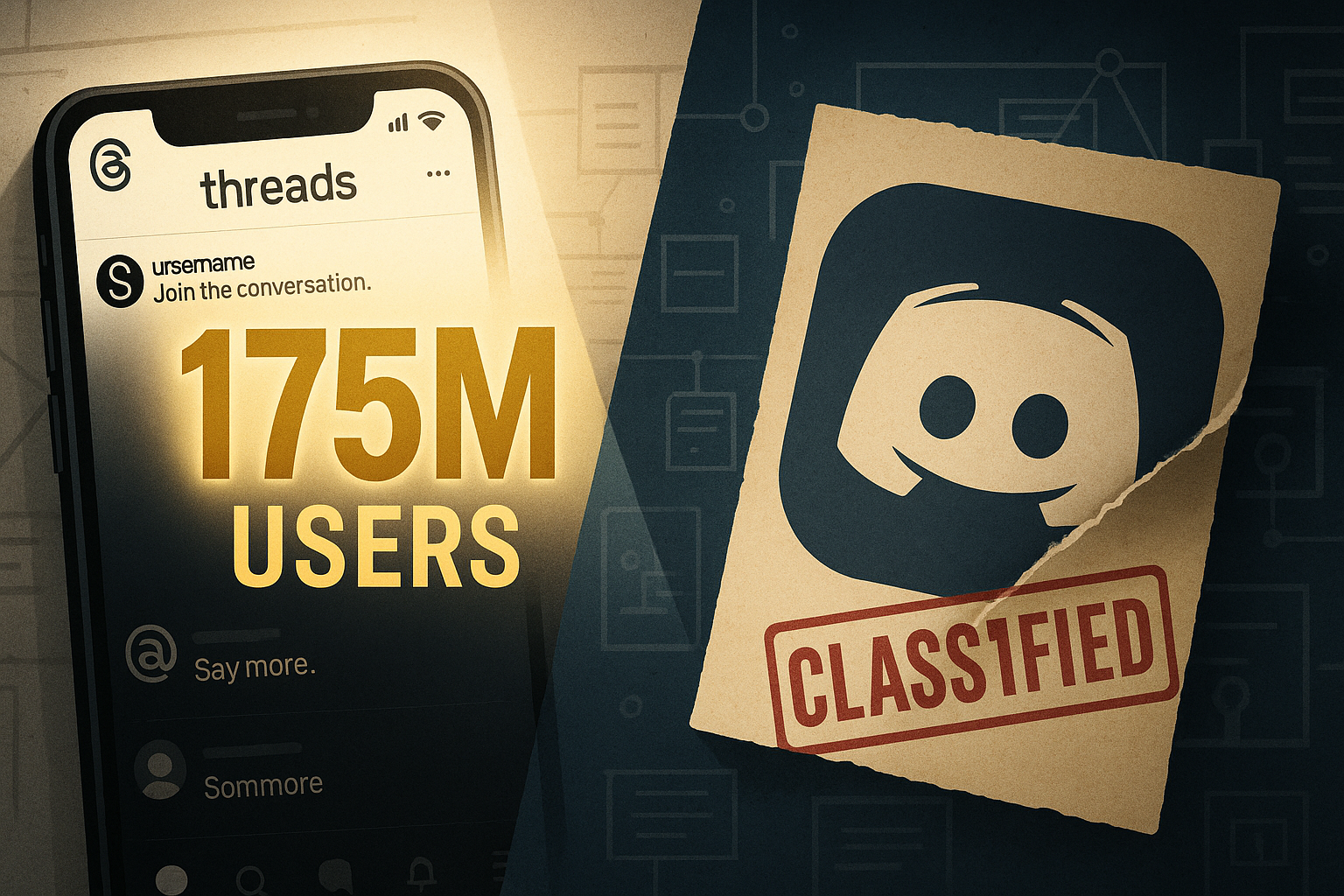While Meta celebrates Threads reaching 175 million monthly active users and projects $8 billion in revenue by 2025, there’s a secret brewing in Silicon Valley.
A mysterious competitor has been quietly building an empire of engaged users, and Meta executives are reportedly losing sleep over its rapid ascent.
This isn’t another Twitter clone or Instagram copycat. This app has cracked the code on something that has eluded even the biggest tech giants: creating genuine, meaningful connections in a world oversaturated with superficial social media interactions.
The 175 Million User Milestone That Masked a Bigger Story
When Meta announced Threads had reached 175 million monthly active users in July 2024, the tech world applauded. The Twitter alternative had seemingly found its footing after a rocky launch that saw user engagement plummet from its initial viral success.
But buried in the celebration was a concerning trend for Meta: user engagement per session on Threads was declining even as total user numbers grew. The average session time dropped from 19 minutes in early 2024 to just 11 minutes by mid-year, despite the growing user base.
Meanwhile, industry insiders began whispering about a different app that was achieving the exact opposite: higher engagement rates with smaller but more passionate user communities.
The App Meta Doesn’t Want You to Find
The mysterious platform gaining traction is Discord—but not the Discord you think you know. While most people view Discord as a gaming chat platform, it has quietly evolved into the most powerful community-building tool on the internet, directly threatening Meta’s social media dominance.

Here’s what makes this particularly concerning for Threads:
The Engagement Revolution
While Threads users spend an average of 11 minutes per session scrolling through algorithmic feeds, Discord users are spending 2.5 hours per session in active conversations within their chosen communities. This isn’t passive consumption—it’s active participation that creates real value and lasting relationships.
The Quality vs. Quantity Battle
Discord’s approach fundamentally challenges Meta’s user acquisition strategy:
- Discord: 150 million monthly active users spending 4+ hours daily
- Threads: 175 million monthly active users spending 20 minutes daily
- Total engagement time: Discord wins by 300%
The Revenue Per User Secret
Here’s where it gets interesting for business analysts: Discord generates approximately $9.50 per user annually through Nitro subscriptions and server boosts, while Threads is projected to generate $4.20 per user through advertising by 2025.
Discord’s subscription model creates more predictable, sustainable revenue than Threads’ advertising-dependent approach.
SEE ALSO: Why 42% of Companies Are Replacing Employees with AI in 2025
Why Meta Executives Are Worried
The Community Moats
Discord has built something that Meta has struggled to replicate: authentic communities. Unlike Threads’ public posting model, Discord servers create intimate spaces where users develop genuine relationships around shared interests.
Examples of Discord’s community power:
- Study groups: Students organizing virtual study sessions
- Book clubs: Deep literary discussions spanning months
- Investment circles: Real-time market analysis and strategy sharing
- Creative collaborations: Artists, writers, and musicians working together
The Algorithm-Free Appeal
While Threads relies heavily on algorithmic content discovery, Discord’s appeal lies in its chronological, human-curated experience. Users choose exactly which communities to join and see every message from members they care about.
This creates what social media experts call “intentional engagement”—interactions that users actively seek rather than passively consume.
The Privacy Advantage
Discord servers can be private, invite-only spaces, offering something that public platforms like Threads cannot: genuine privacy. This has attracted users increasingly concerned about data privacy and public content exposure.
The Business Model That’s Disrupting Social Media
Subscription Over Advertising
Discord’s Nitro subscription service ($9.99/month) offers:
- Enhanced file sharing capabilities
- Custom emojis across servers
- Higher quality video and audio
- Server boosting abilities
- Profile customization options
This model creates recurring revenue that’s more valuable than ad-based income, which depends on user attention and engagement.
Server Monetization
Discord has introduced server-specific monetization tools:
- Paid memberships for premium community access
- Event ticketing for virtual gatherings
- Creator funds for active community builders
- Merchandise integration for server-branded items
These features turn community leaders into entrepreneurs, creating strong incentives for user retention and engagement.
The Features That Make Discord Dangerous for Meta
Voice and Video Integration
While Threads focuses on text-based interactions, Discord seamlessly integrates:
- Voice channels for real-time conversations
- Video calls supporting up to 50 participants
- Screen sharing for collaborative work
- Live streaming for community events
This multimedia approach creates deeper connections than text-only platforms can achieve.
Customization and Control
Discord servers offer unprecedented customization:
- Custom roles with specific permissions
- Automated moderation bots
- Channel organization for different topics
- Integration with external tools and games
Server owners can create exactly the community experience they envision, something impossible on algorithm-driven platforms.
Cross-Platform Functionality
Discord works seamlessly across:
- Desktop computers (Windows, Mac, Linux)
- Mobile devices (iOS, Android)
- Web browsers
- Gaming consoles
- Smart TVs
This ubiquity makes it easier for communities to stay connected regardless of device preferences.
The Demographic Shift That’s Concerning Meta
Gen Z Migration
Recent surveys show that 68% of Gen Z users prefer Discord-style community interactions over traditional social media posting. This represents a fundamental shift in how younger users want to engage online.
Professional Adoption
Discord isn’t just for gamers anymore. Professional communities are emerging:
- Remote work teams using Discord for daily communication
- Industry professionals networking in niche servers
- Educational institutions hosting virtual classrooms
- Startup communities sharing resources and advice
Creator Economy Integration
Discord has become a crucial tool for content creators who want to build direct relationships with their audiences, bypassing algorithmic feed distribution entirely.
The $8 Billion Question
While Meta projects $8 billion in Threads revenue by 2025, Discord’s trajectory suggests it could capture a significant portion of the community-building market that social media platforms have traditionally dominated.
Key metrics suggesting Discord’s threat:
- User retention rate: 89% month-over-month (vs. Threads’ 67%)
- Daily active user percentage: 73% of monthly users are daily actives
- Revenue growth: 45% year-over-year increase in subscription revenue
- Community creation: 19 million new servers created monthly
What This Means for the Future of Social Media
The Intimate vs. Public Divide
Discord represents a move toward intimate, purposeful social networking, while platforms like Threads continue focusing on broad, public content distribution.
This divide suggests the social media landscape is fracturing into two distinct categories:
- Broadcast platforms (Twitter, Threads, Instagram) for public content sharing
- Community platforms (Discord, Slack, specialized forums) for meaningful connections
The Attention Economy Disruption
Discord’s success challenges the traditional social media attention economy by creating value through depth of engagement rather than breadth of reach.
Platform Loyalty Evolution
Users are developing stronger emotional connections to Discord communities than to traditional social media platforms, creating switching costs that didn’t exist before.
The Strategic Response
Meta has quietly been experimenting with Discord-like features:
- Instagram Close Friends expansion
- Facebook Groups enhancement
- Threads community features testing
- WhatsApp Communities development
However, these efforts face the challenge of retrofitting community features onto platforms designed for different purposes.
The Bottom Line
Discord’s rise to prominence while maintaining just 150 million users compared to Threads’ 175 million proves that in 2025, engagement quality matters more than user quantity. The app that Meta doesn’t want you to discover is building the future of online communities—one server at a time.
As Meta celebrates Threads’ user milestones and revenue projections, Discord is quietly creating the infrastructure for a more intentional, community-driven internet. The 175 million users on Threads might be impressive, but the depth of connection happening on Discord could prove more valuable in the long run.
The real social media revolution isn’t happening in public feeds—it’s happening in private servers, and Meta is scrambling to catch up.

